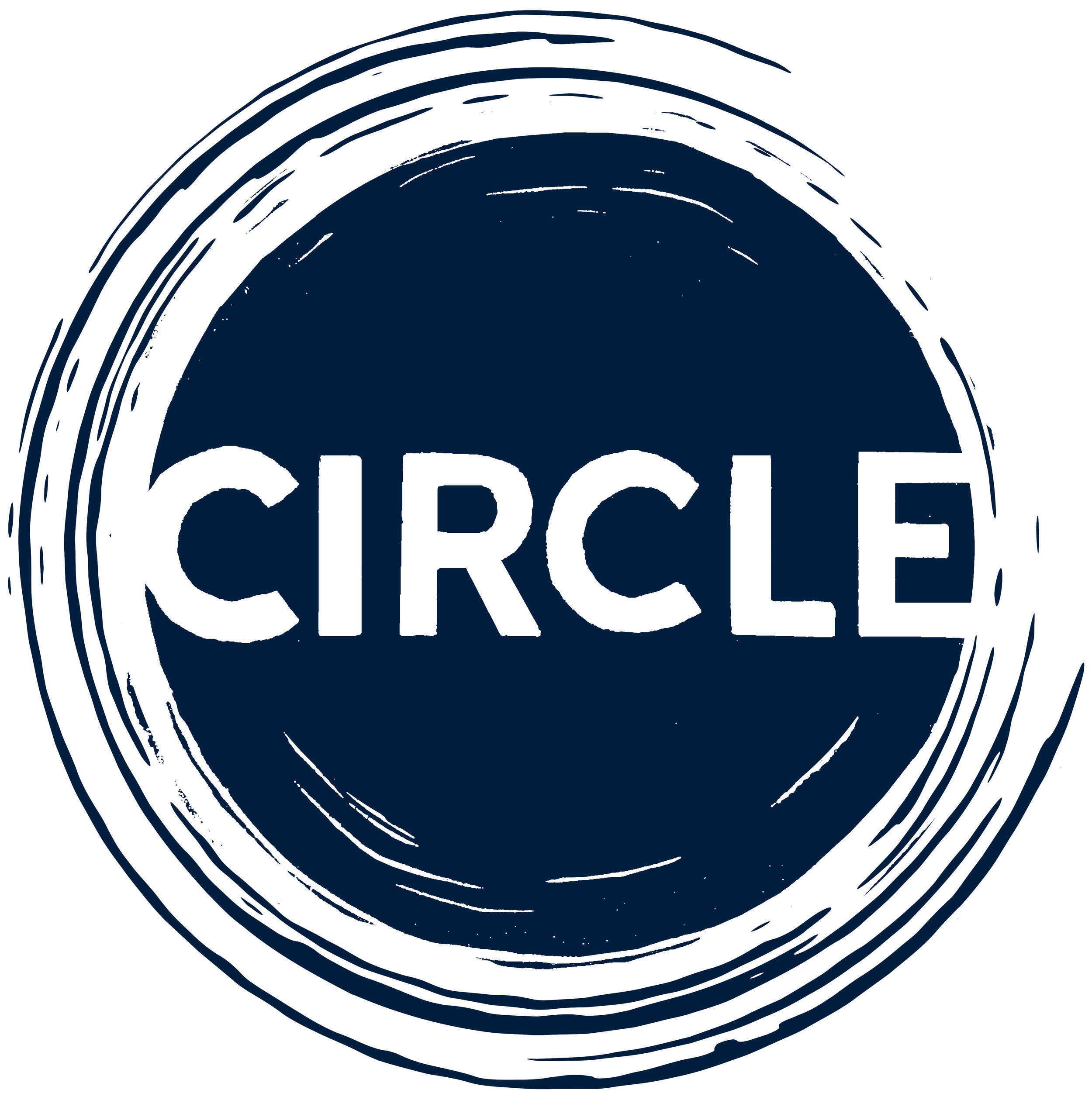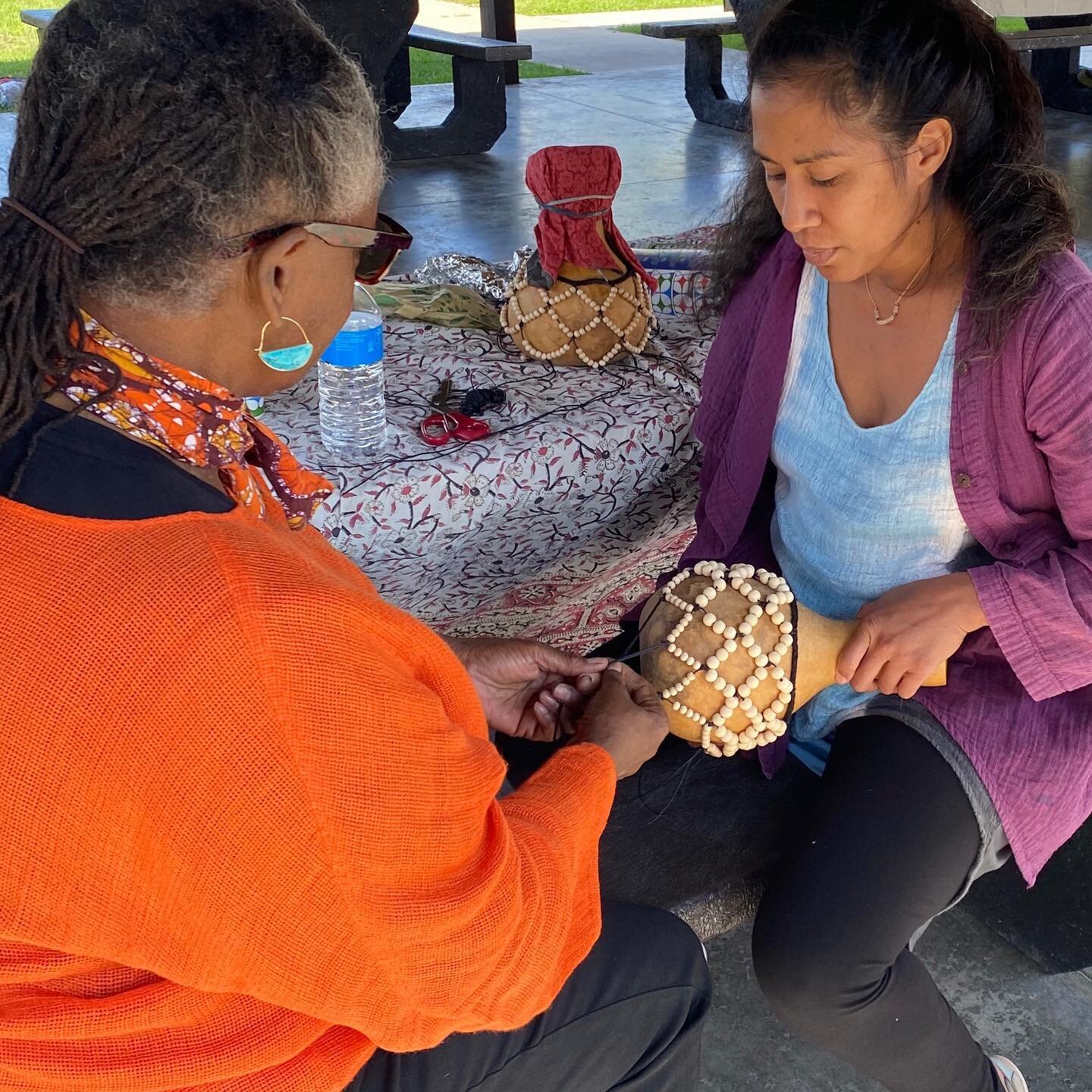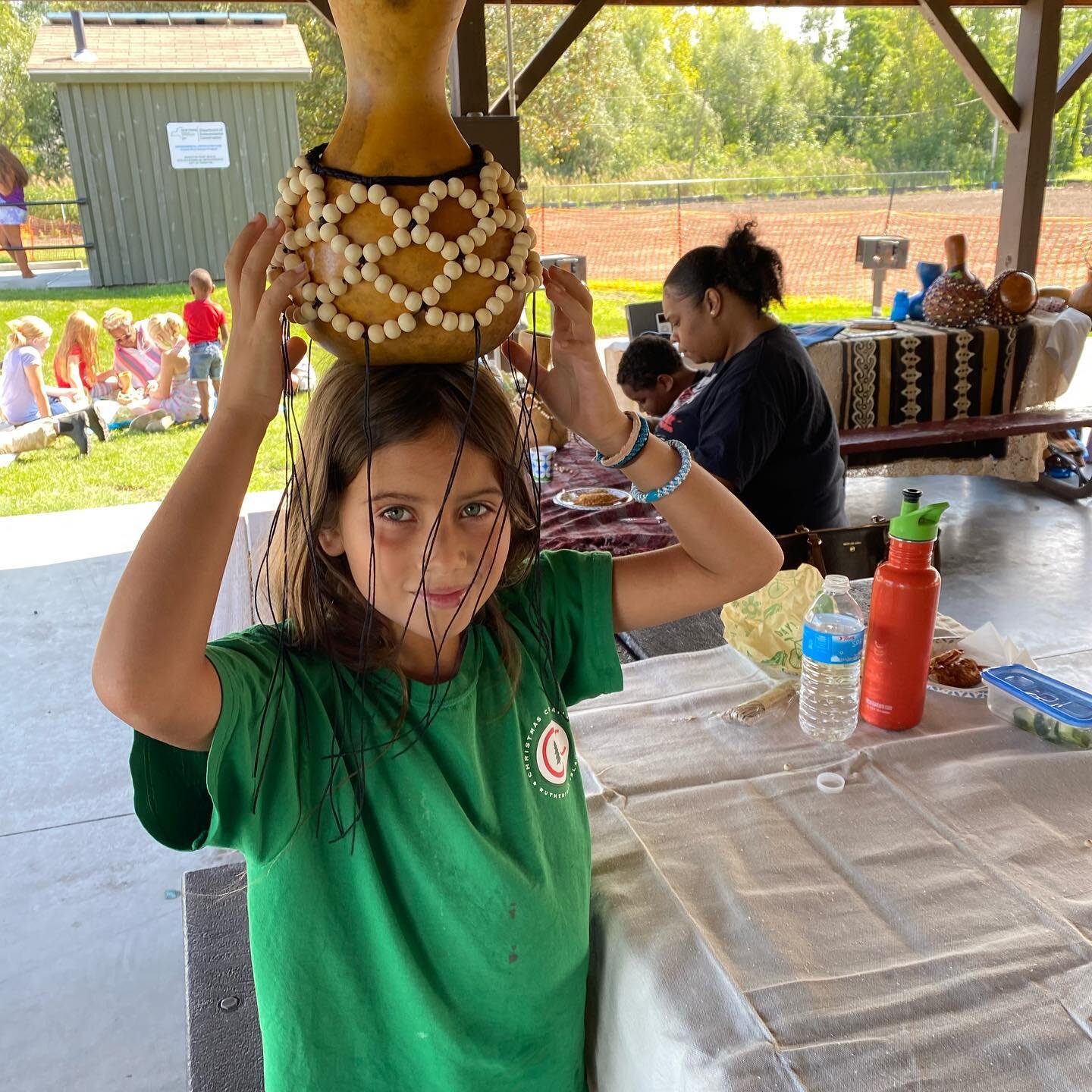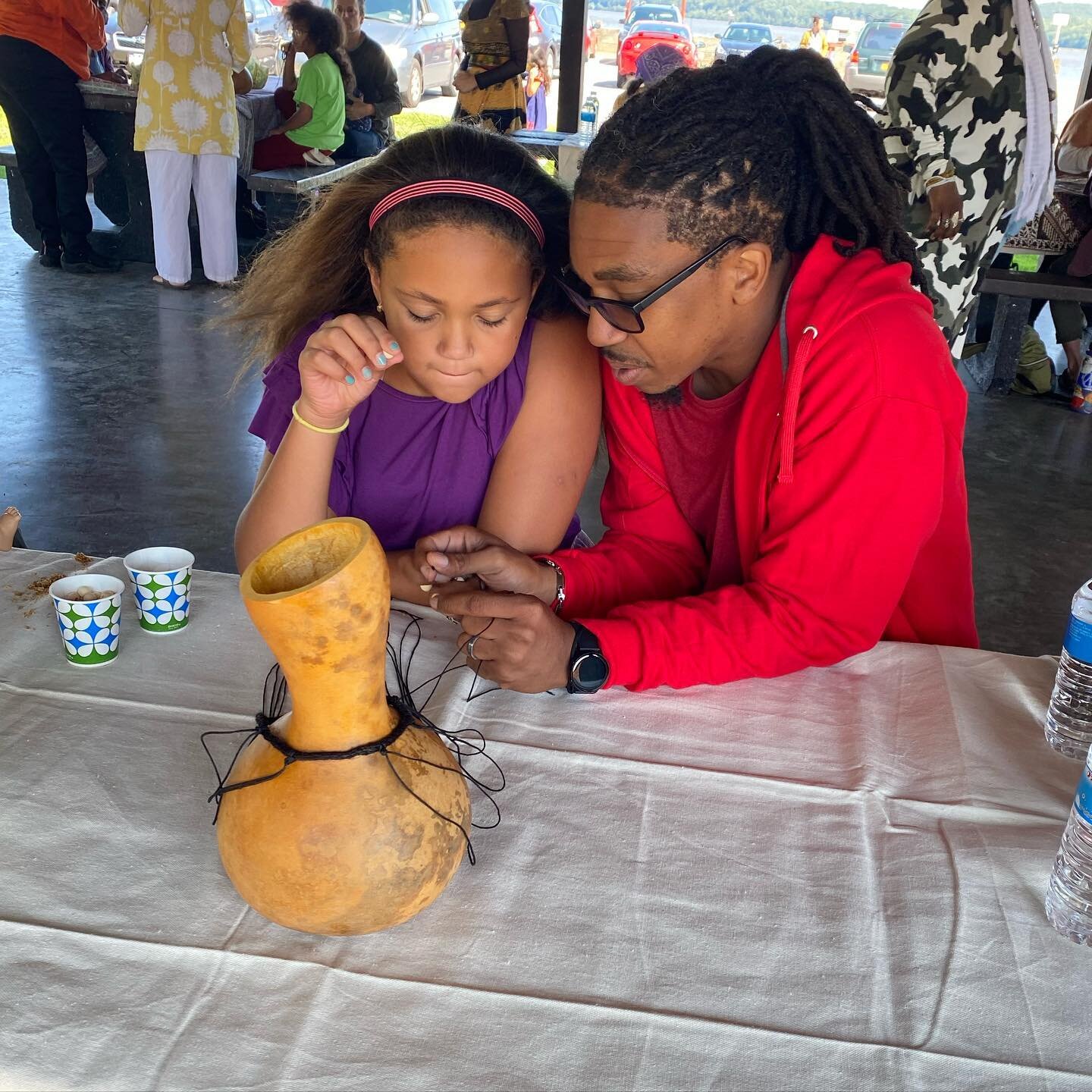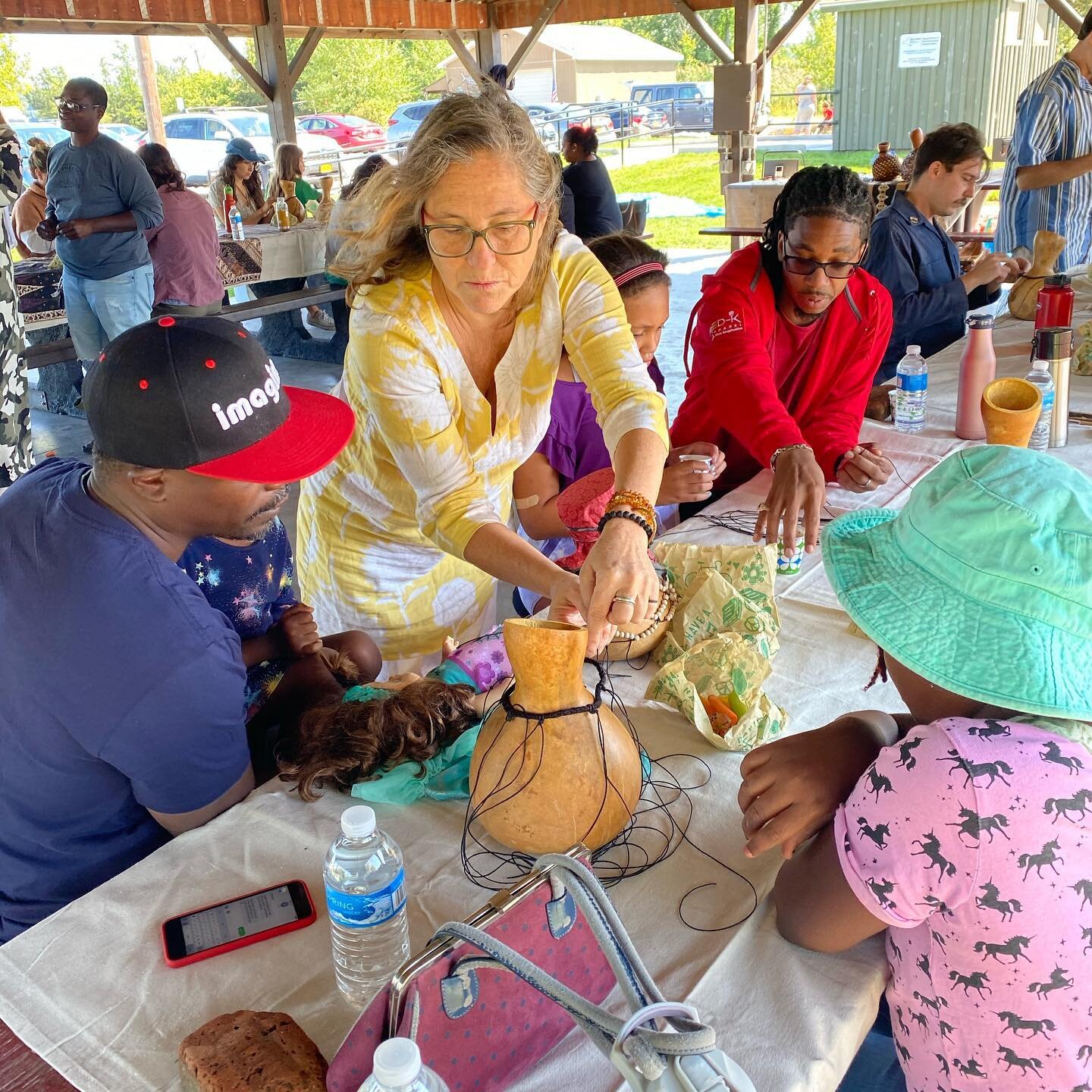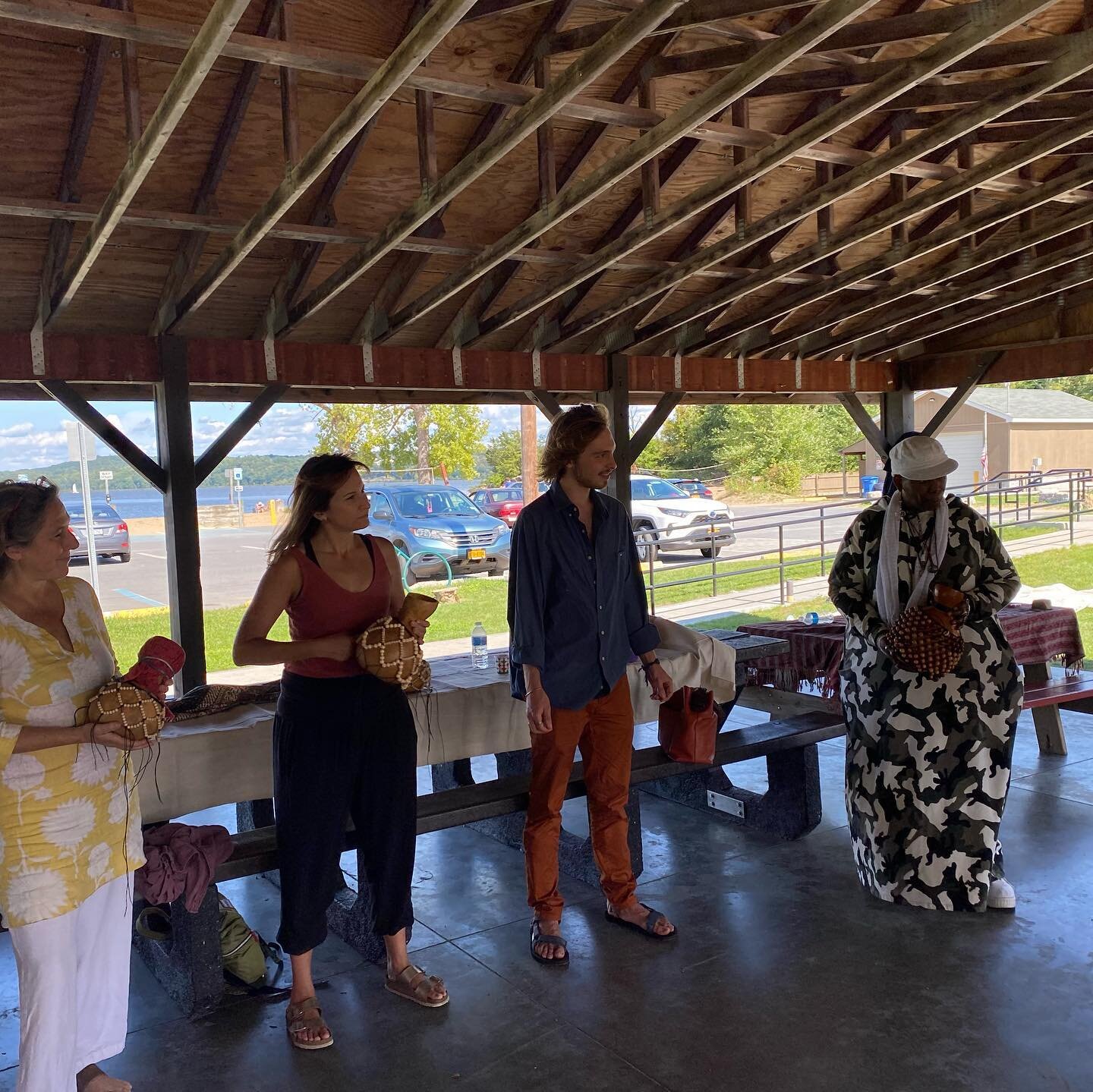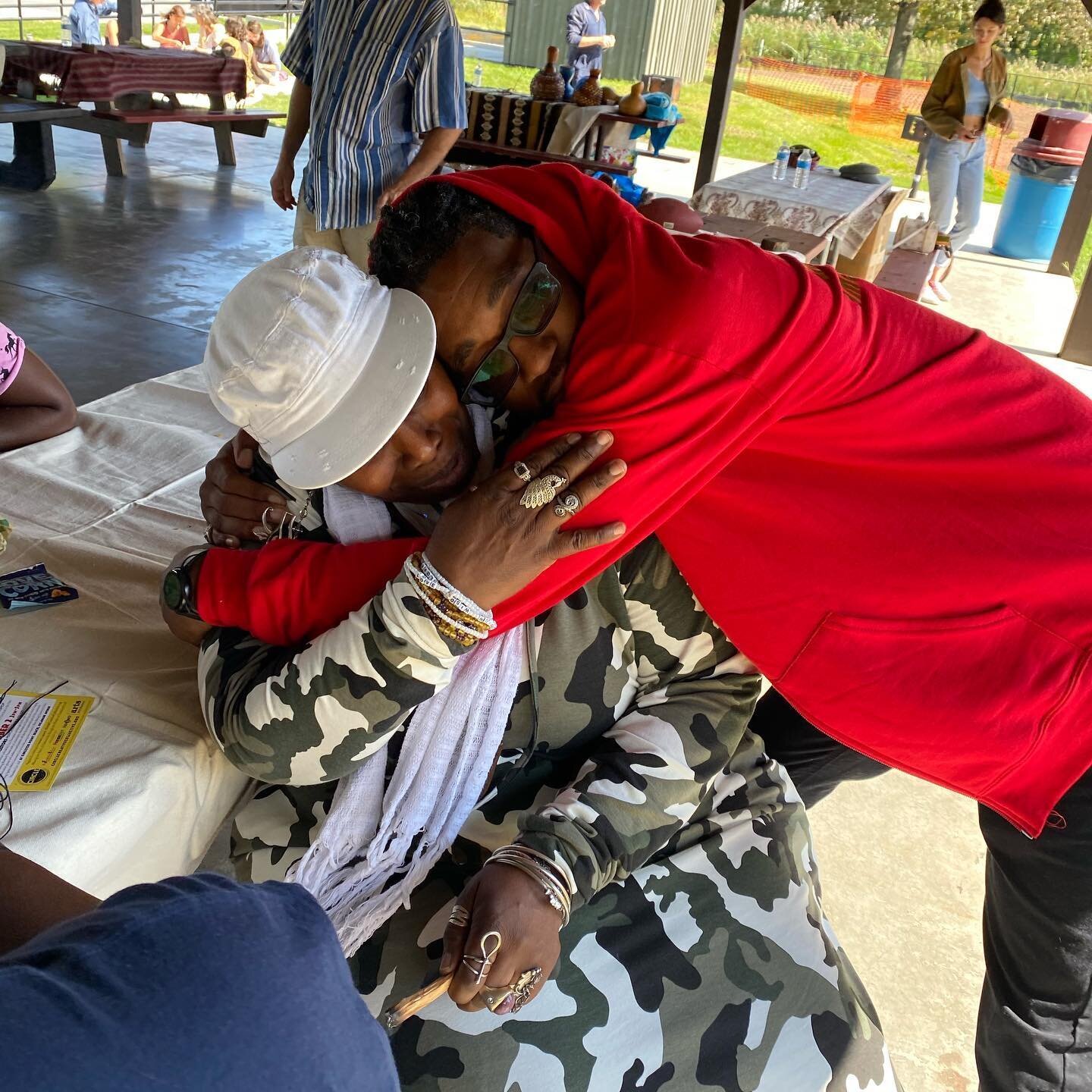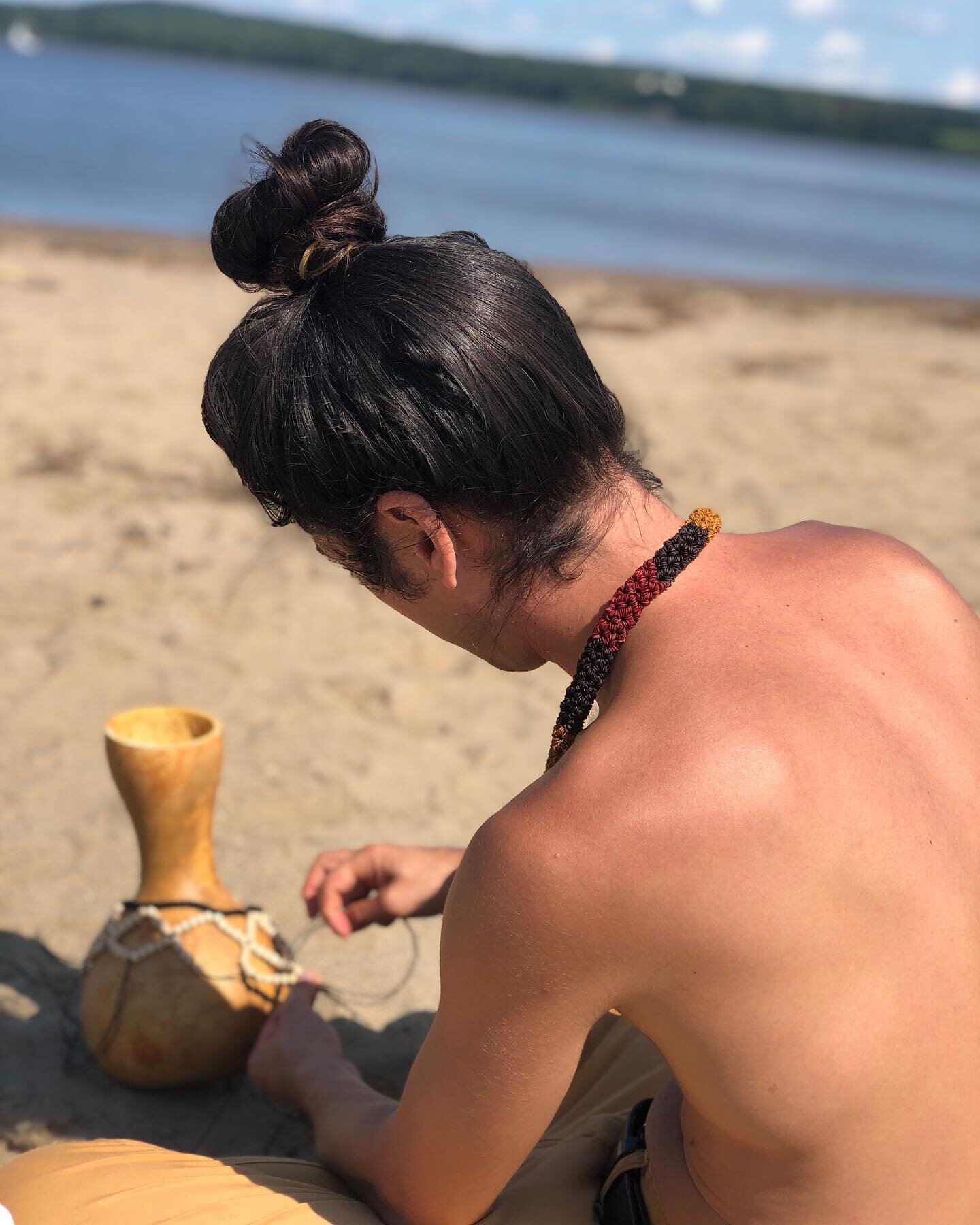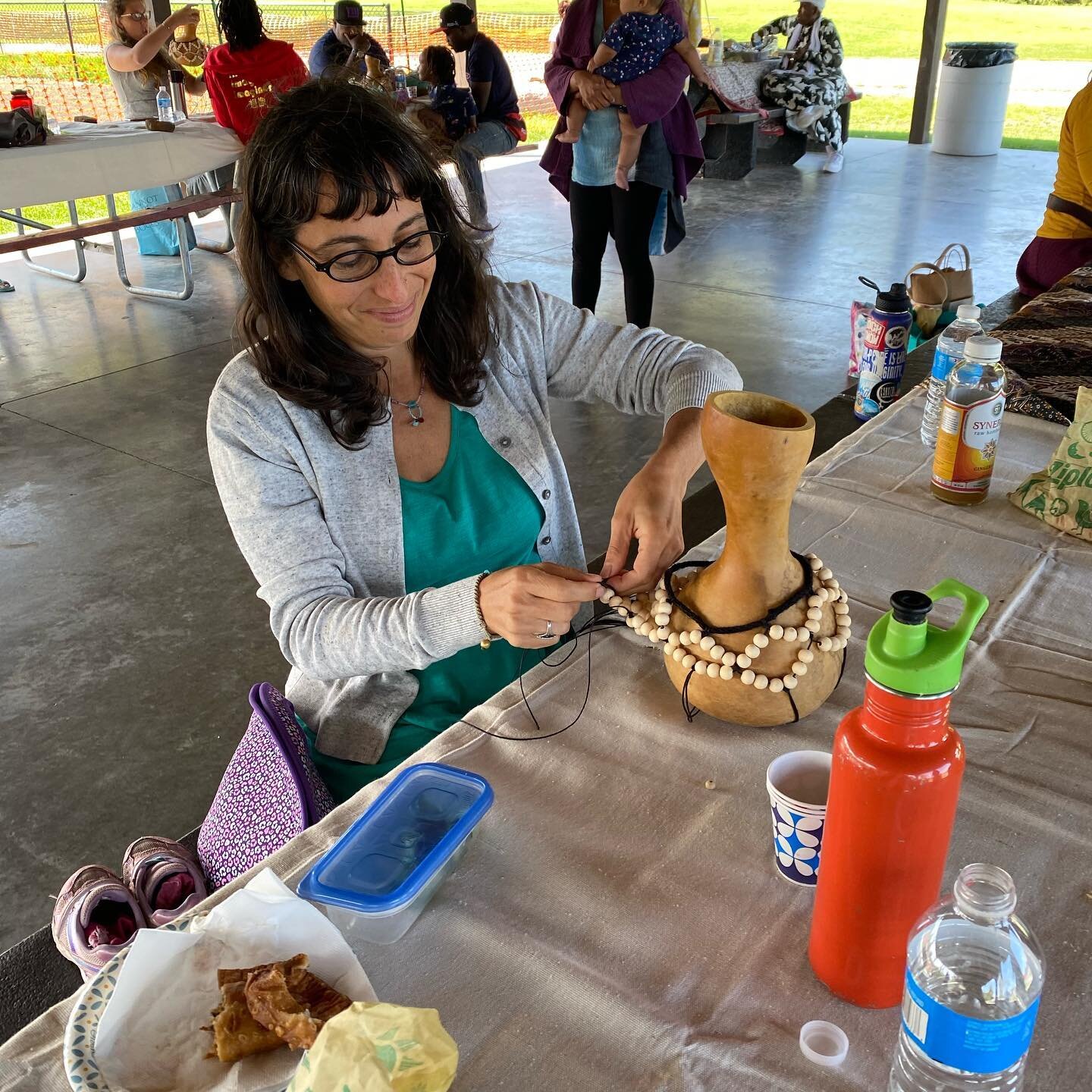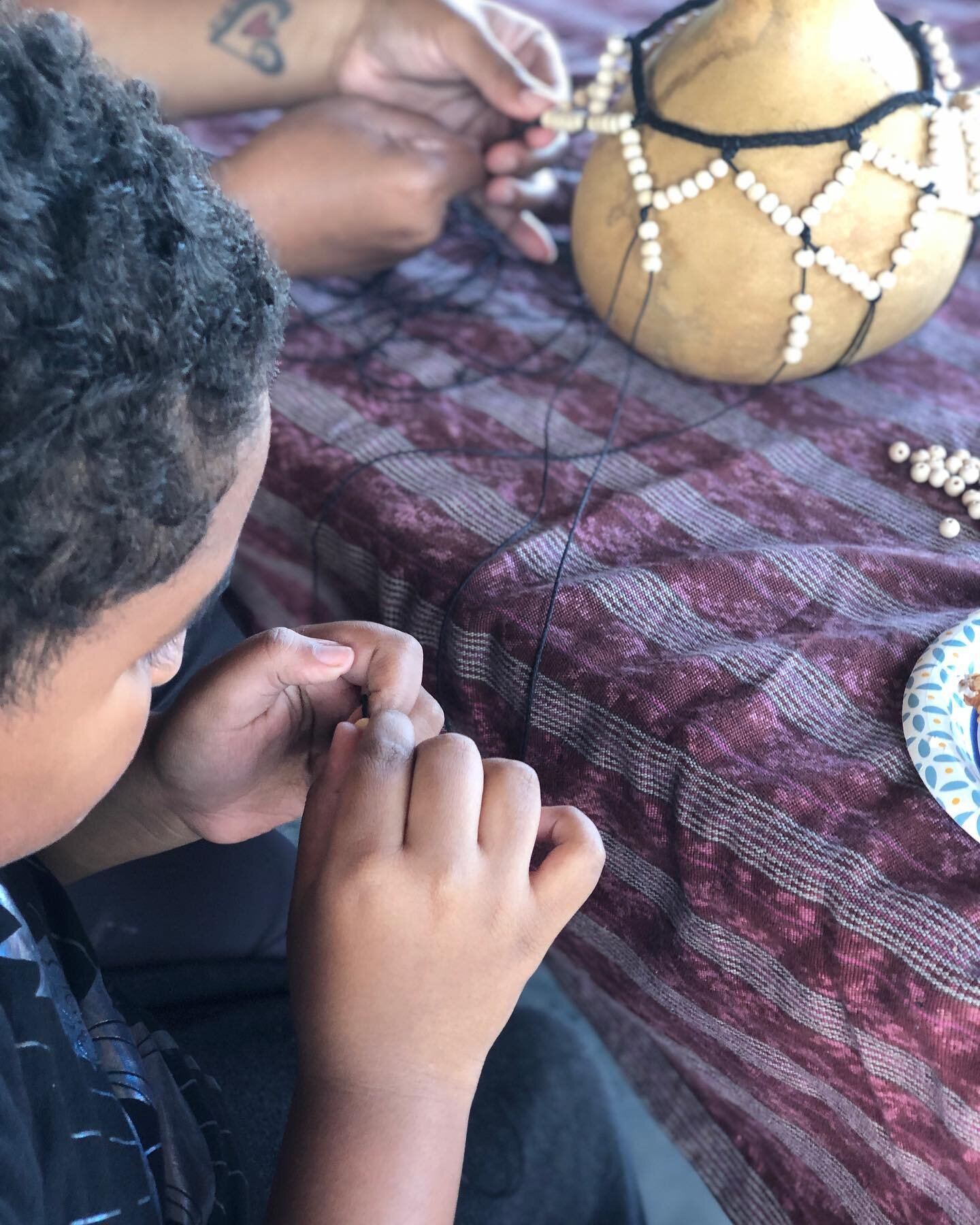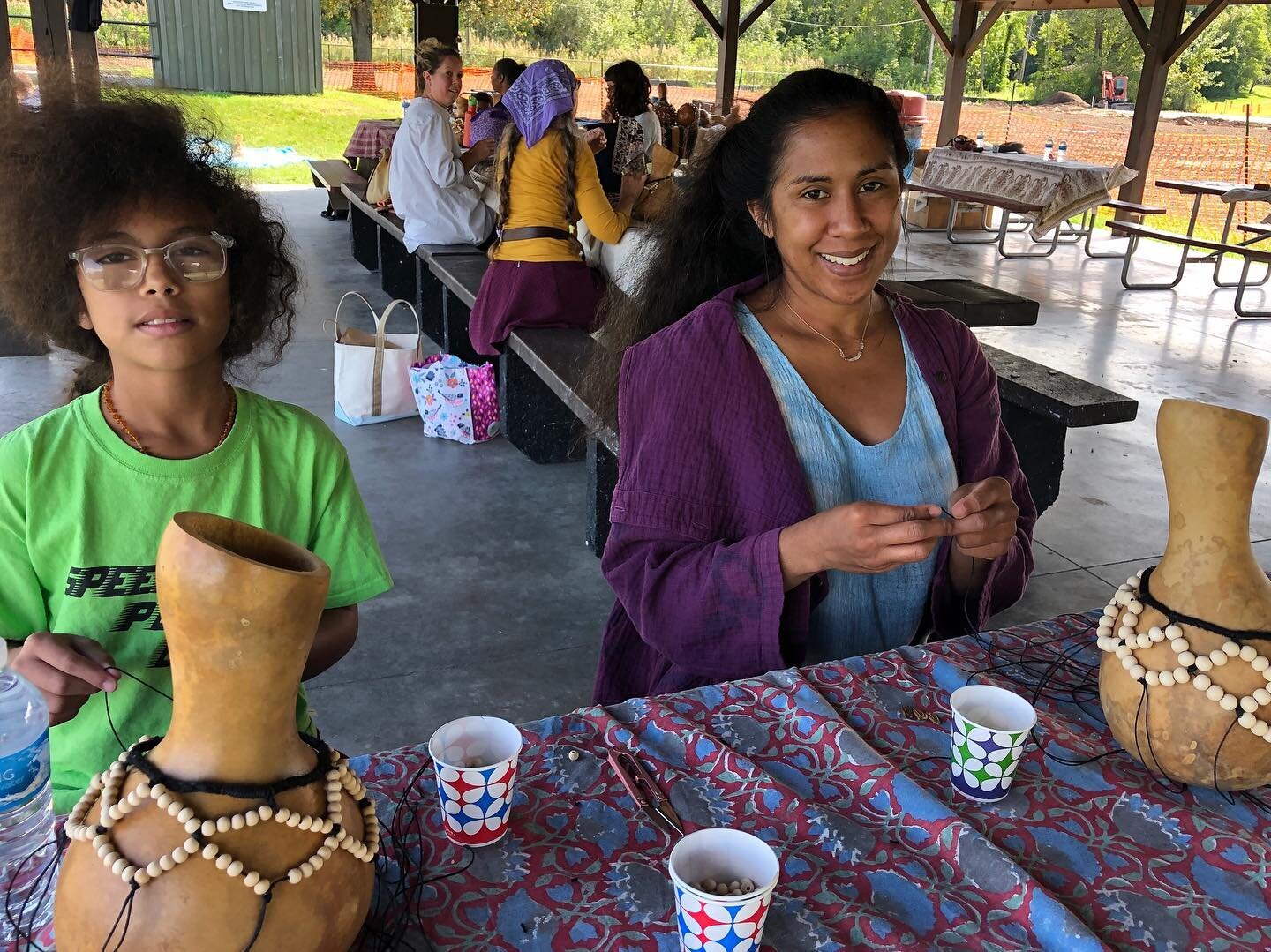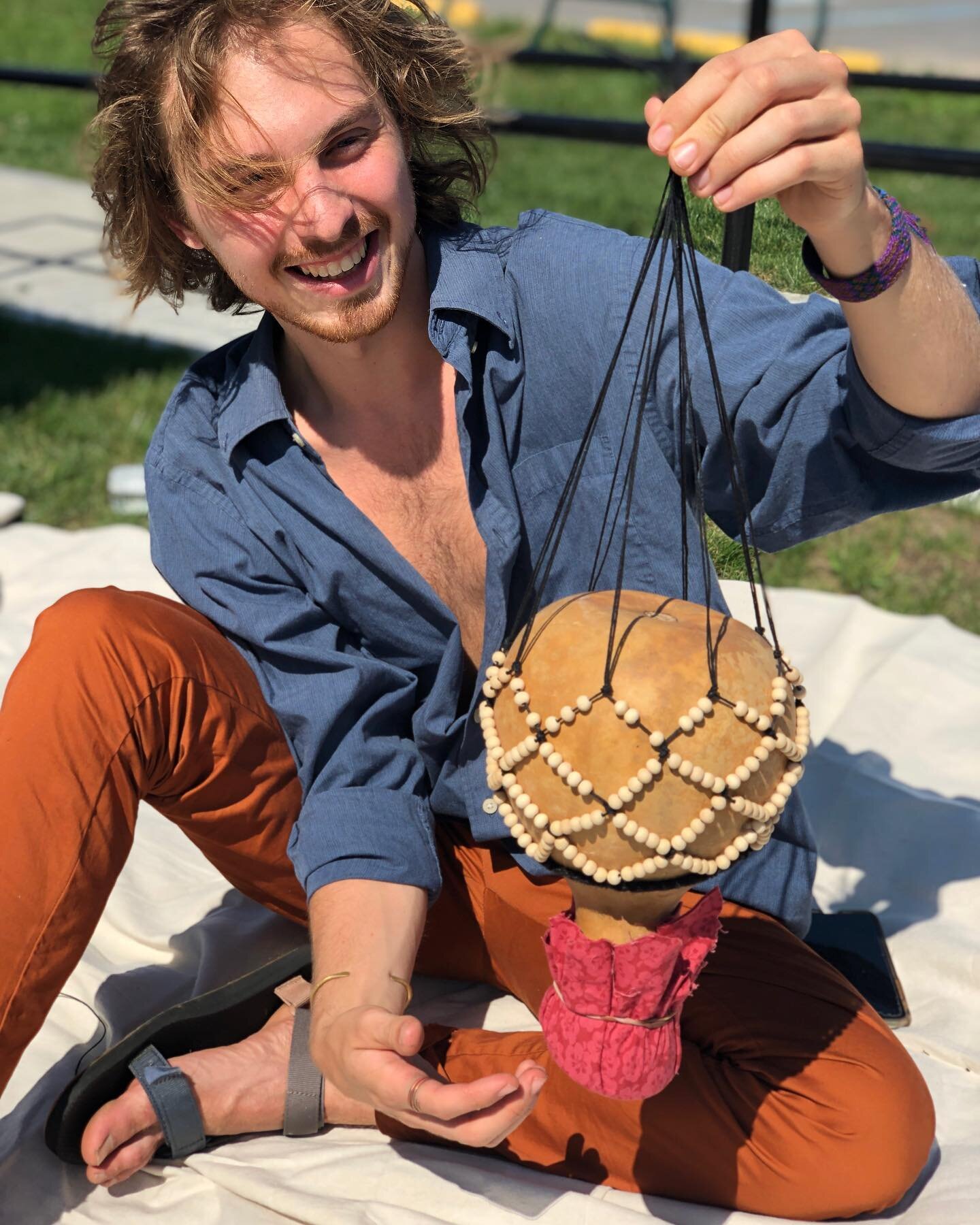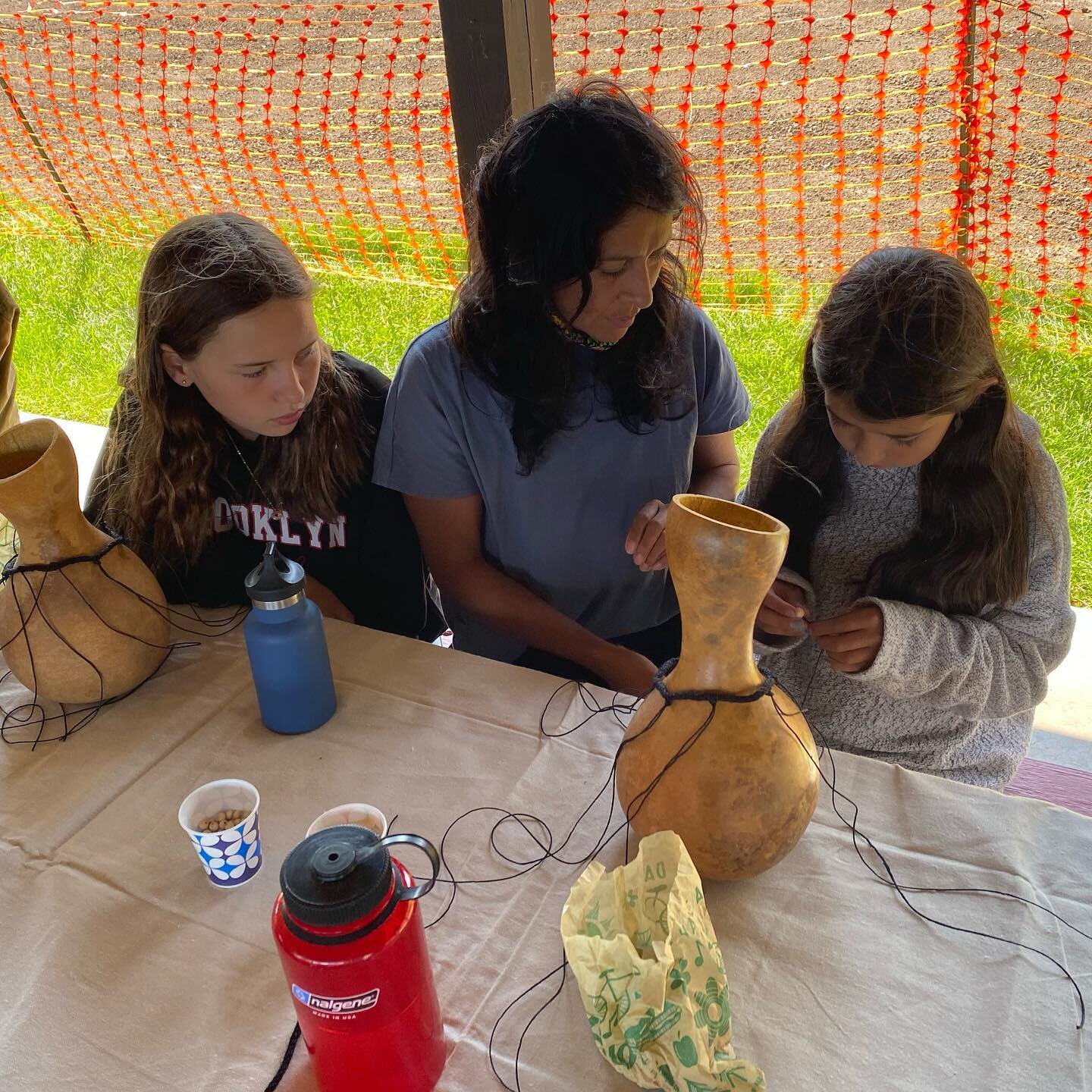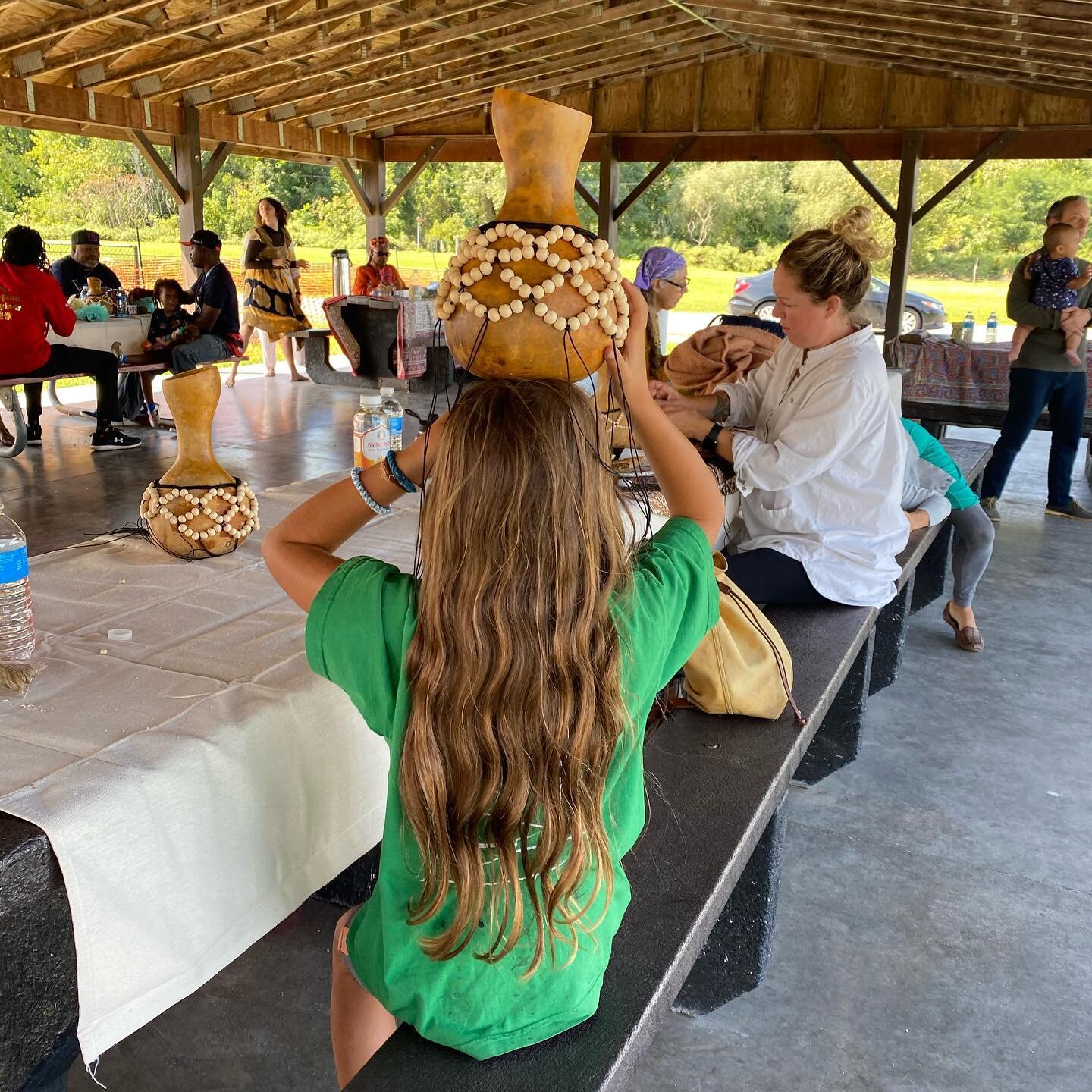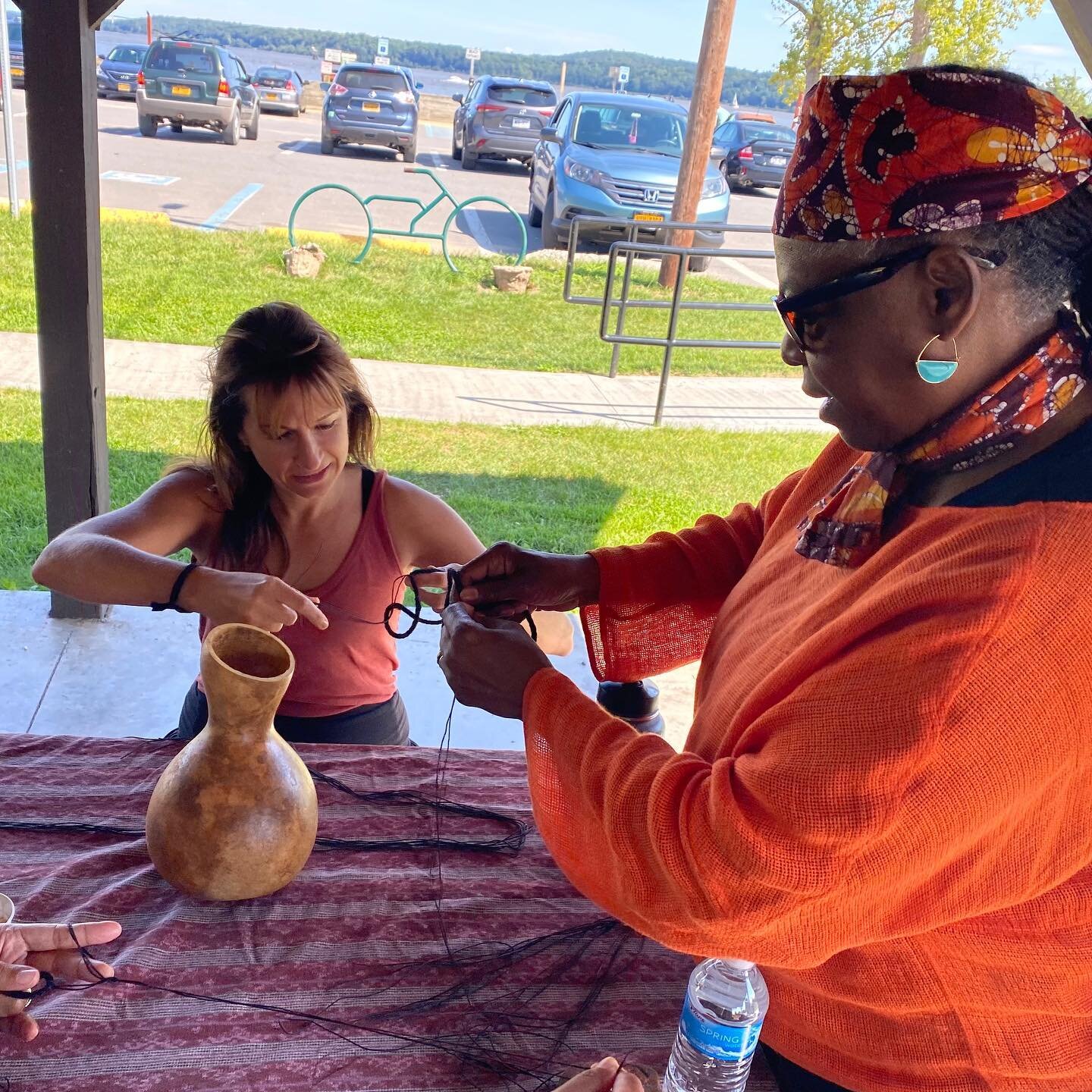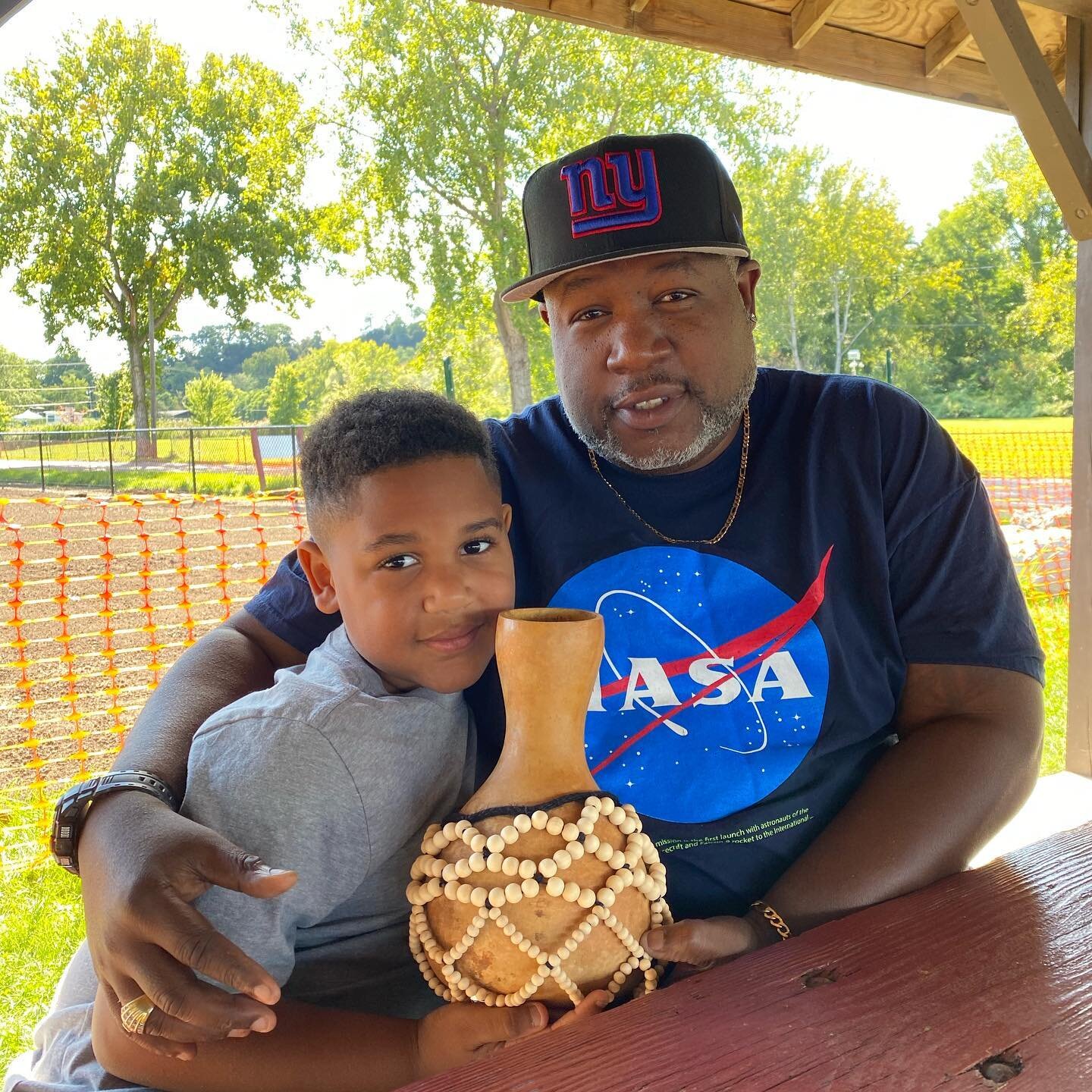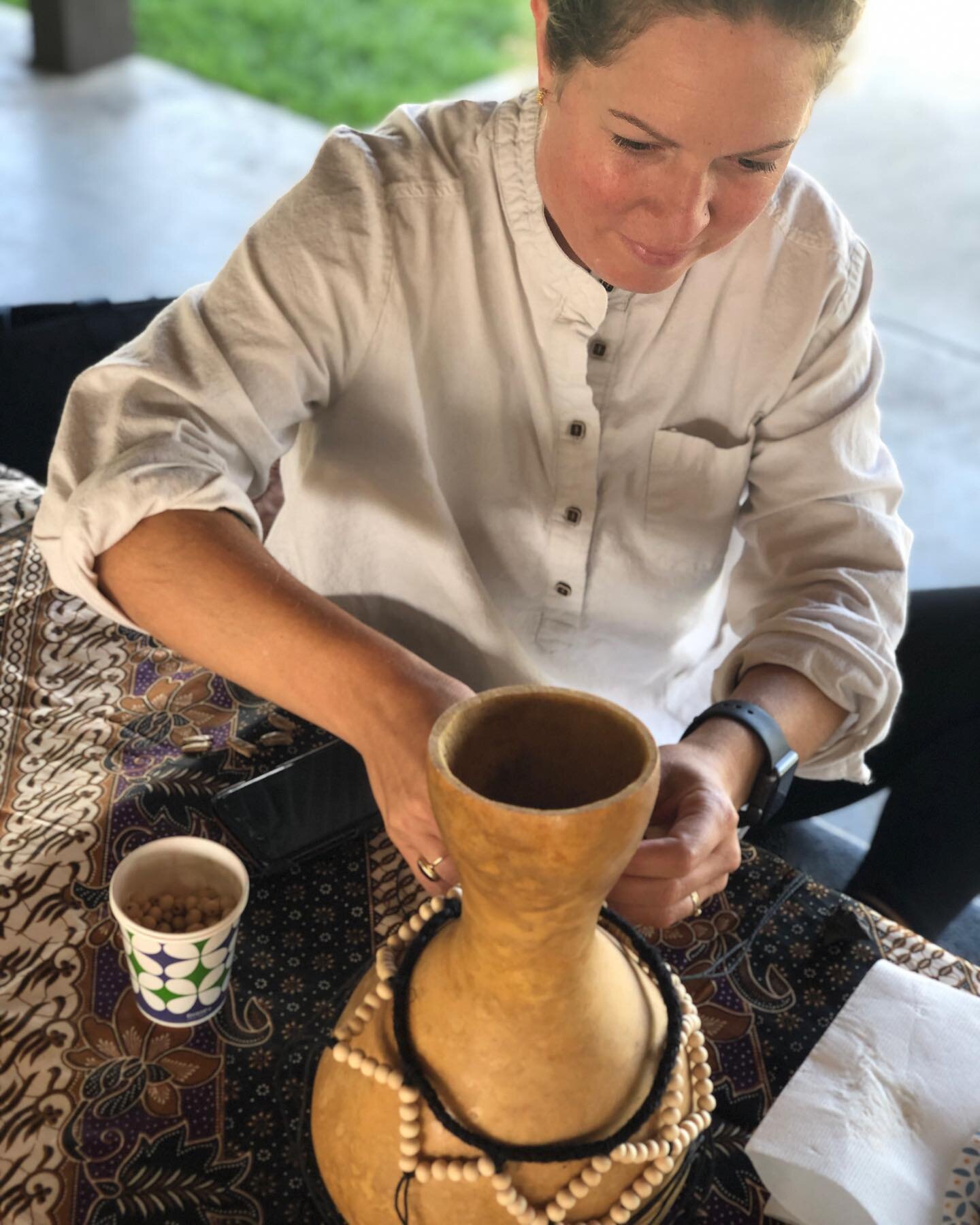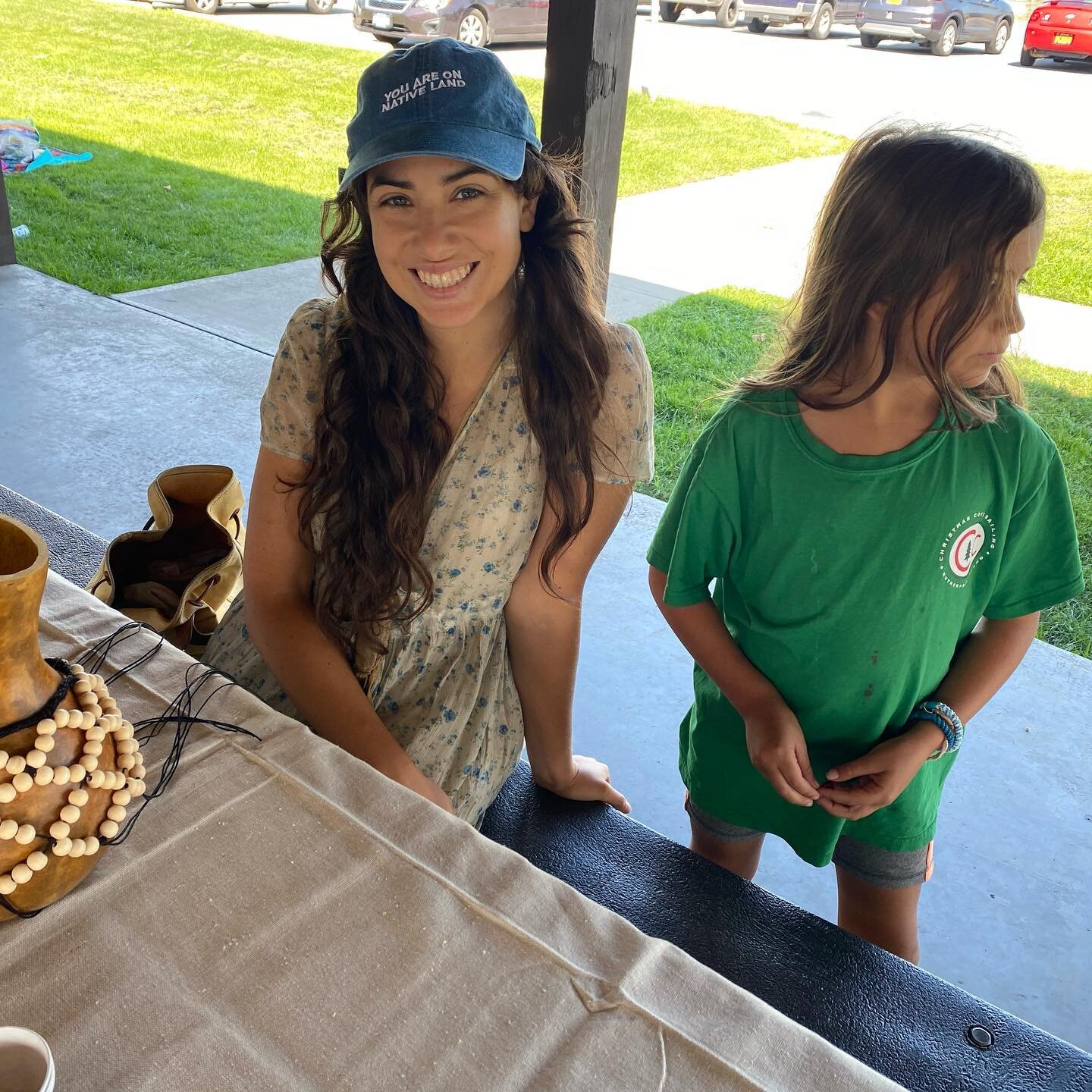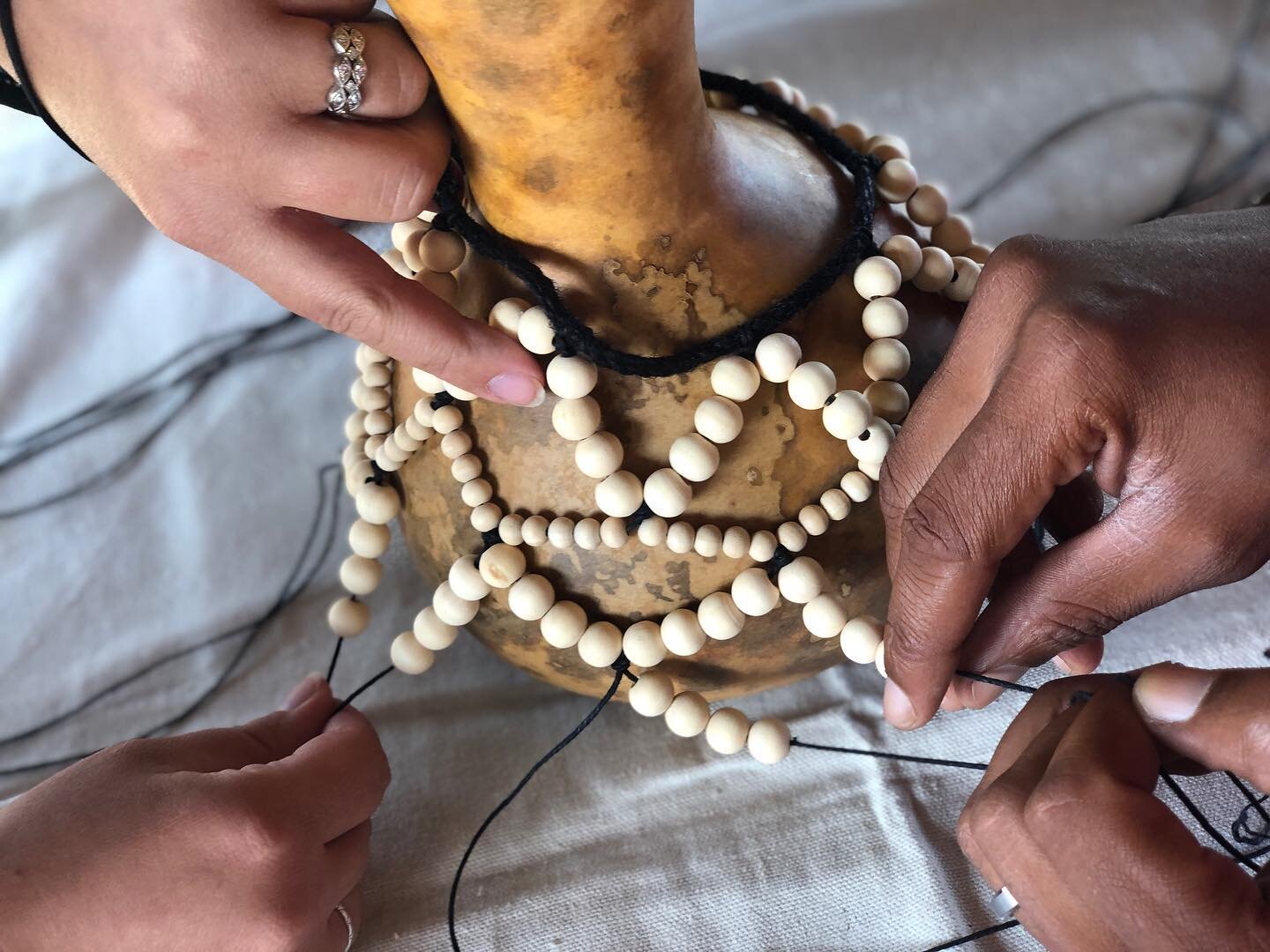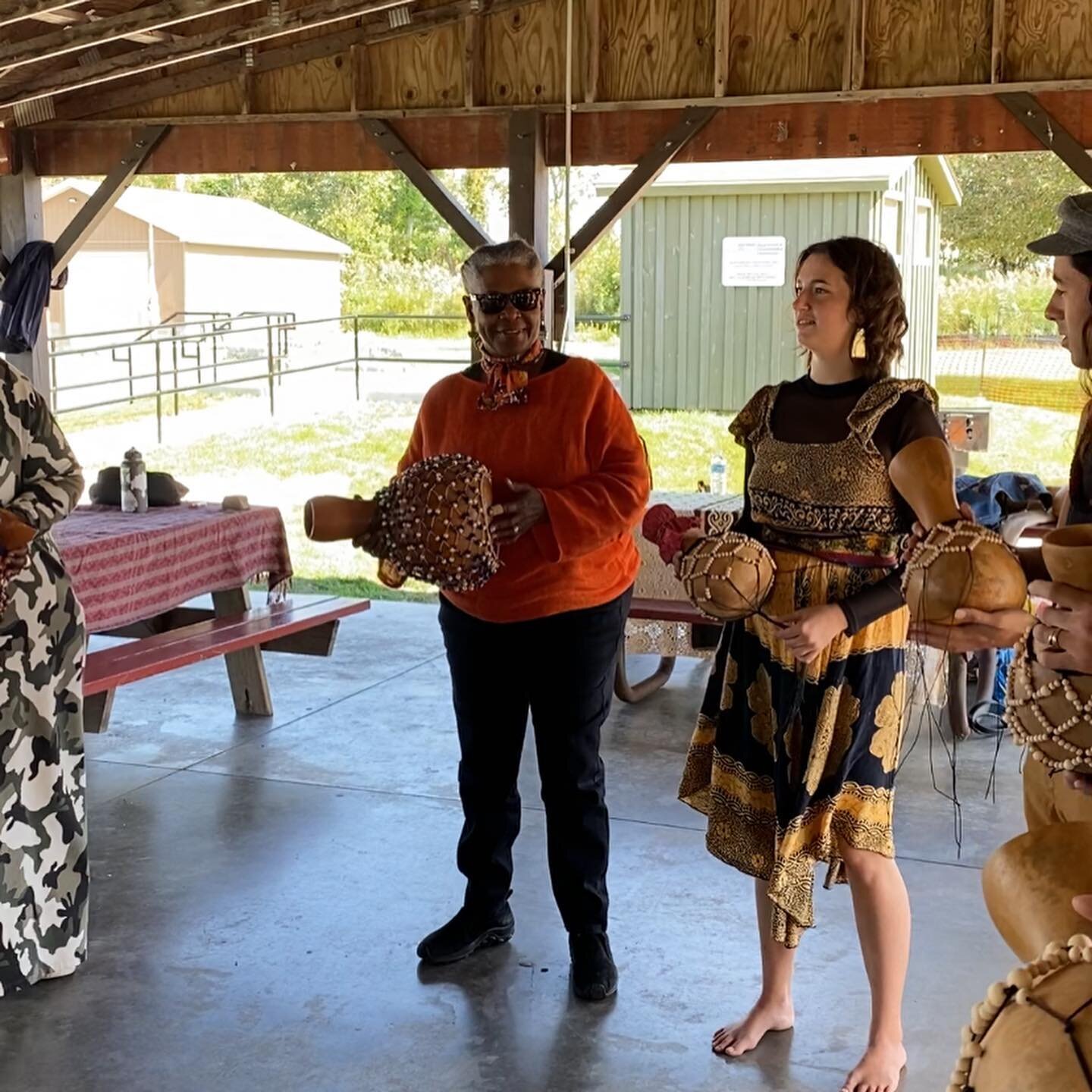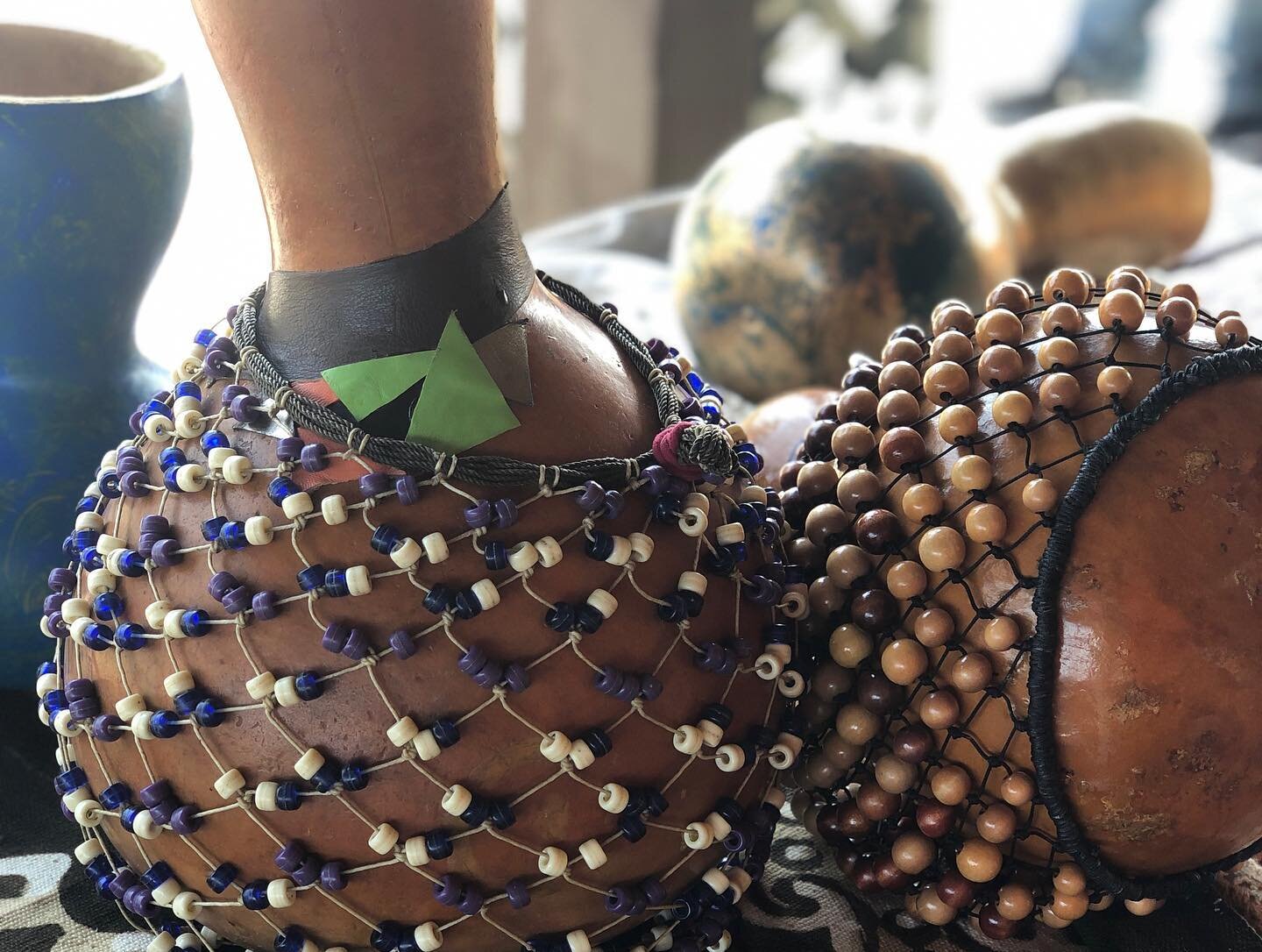Voices Shaking Free
This past Saturday, on the potent date of 9/11, twenty families and many friends gathered at Kingston Point Beach to celebrate community and the healing wrought by shared wisdom and the unique expression of our own two hands and hearts. The medium was shekere— gourd instruments, and (in this case) decorated with hemp cord and simple wooden beads—and although we each had access to the same small and large monochromatic beads, every finished piece pulsed with its very own character and range.
What Is A Shekere?
This curvaceous ancient percussion instrument emits, when played just right, sounds that evoke wind rolling through dry grassy plains, the spicy communication of a rattlesnake, the soft rhythms of a swarm of cicadas, and inspiration to gather friends together in movement. Simply explained, a shekere is a hollowed out gourd or calabash, traditionally used to carry water and, when adorned with string, seeds, shells, beads and other embellishments, offers up gorgeous, festive music that elicits dance, song and connection. These shakers or rattles are oh so much more than mere pumpkins, and though they have their origins in West African culture and history, they have made their way into music and sacred ceremony as far reaching as the Caribbean, the Americas, and way beyond.
According to The Beaded Gourd - Its History, Construction and Technique by Beverly Botsford, “In Africa it is found primarily, but not exclusively, in the countries of Nigeria, Togo, Ghana, Benin, Sierra Leone and Côte d'Ivoire (there are many parts of Africa where you will not hear this instrument). Different language groups in each country often have their own names, styles, techniques, and traditions associated with the shekere.
”In Nigeria, the very large beaded calabash is called an "agbe", and traditionally is owned and played only by professional musicians (Olatunji, Music in African Life). It is a personal instrument and never loaned or shared, even with family members. However, a son who is a professional musician may inherit his father's agbe. Shekeres among the Yoruba of Nigeria are often connected with religion, given great respect, and play a very important role in certain traditional musical forms.
”Throughout West Africa you will also find a smaller gourd, covered with a woven net which is tied off at the bottom, leaving a tail of loose strings. In Ghana and Togo among the Ewe language group it is known as the "axatse" and is often used to accompany a drum or bell orchestra on important occasions. In Sierra Leone you will find a similar type of shekere with a very loose net and long tail, often called a "shake-shake" or "shaburay".
”When African slaves were taken to the "New World," they carried with them many of these rich musical traditions, which took root in varying degrees in different parts of the Americas and the Caribbean. In Cuba, Yoruba religious traditions using drums and shekeres are found almost completely intact—with similar rhythmic patterns, names of instruments and accompanying chants. Brazilians sometimes use a beaded (with seeds) coconut called "afuxe" similar in name and style to the Ghanian "axatse". In the United States the shekere and other African related instruments continue to grow in popularity and are rapidly becoming part of our contemporary musical expression.”
Presented as part of Circle’s season-long Second Annual Sankofa series taking place throughout this autumn 2021, our workshop this past weekend was led by Caru, Ms. V, and Circle. One woman exclaimed upon arrival, “You have no idea how excited I am! I have been wanting to know how to make a shekere for years!”
Some arrived more tentatively, but full of curiosity and palpable joy at the possibility of learning something new. We sat at picnic tables under the pavilion, the mouth of the historic Hudson River kissing the sand beach just beyond where we were, caressed throughout the day by a most glorious wind, West African traditional music blaring out of speakers the likes of Olatunji and others, mixed with stories, laughter, children squealing. The lush sounds of shekeres were also rising up, shaking free each voice from both the makers and wise and humble ancestors who, according to Carol Caru Thompson (aka Caru), have been slumbering within each, just waiting to be coaxed free.
We learned rhythms ancient and accessible, which we will share on October 2nd when our Circle will gather again as part of Sankofa with How the Gourds Got Their Voices honoring the descendants and spirits of enslaved African people who once lived and shaped the Hudson Valley, their history, cultural contributions, and experience. This life-affirming story written and told by Caru will be brought to life with the visionary life sized puppets of Rosendale's Redwing Blackbird Theater, Circle, and our community, again at Kingston Point Beach. Members of Good Gourd, a local singing and percussion group which Caru founded and celebrates African-American heritage and culture, will also be an essential part of the event and a healing ceremony for the waters.
Please join us too- and bring your shakers if you have one! We will also be sharing many crafts projects for the whole family on the day of the event. (Rain date Oct 3)
Local organizations and artists in partnership with Sankofa throughout this fall series include Circle Creative Collective, MyKingstonKids, Seasoned Delicious, Harambee and others. Workshops this autumn are an African roots culinary class and talk, a sweetgrass basket weaving class with three generations of Gullah Geechee weavers, and on October 2nd, a community basket weaving project, a basket making workshop, beading, shaker making from upcycled materials and much more. Families and friends of all ages are welcome!
When: October 2nd 2-5 pm.
Where: Kingston Point Beach
How: Please bring your curiosity and open heart!
All participation in our October 2nd hands-on projects and attendance to our performance are free. Tax-deductible DONATIONS, as well as VOLUNTEERS, are needed and welcome! Gratitude for any ways you can give and support what we are blooming together! By the way, “Sankofa” is from the Twi language of Ghana and teaches us to reach back to our roots to recover and gather the best of what our past has to teach us, so we can move forward with our full potential. Whatever we have lost, forgotten or been stripped of can be revived, preserved, and sustained. A good thing to embody and remember…
We can’t wait to play with you!
Love,
-Circle
Text by Jenny Wonderling, photos by Jenny Wonderling and Melissa Hewitt
